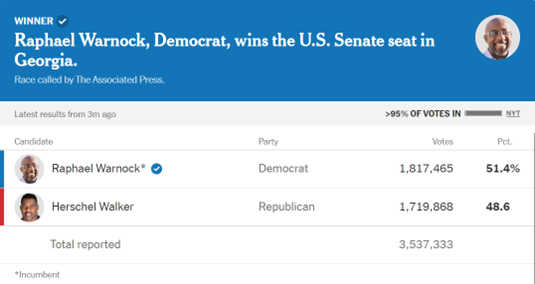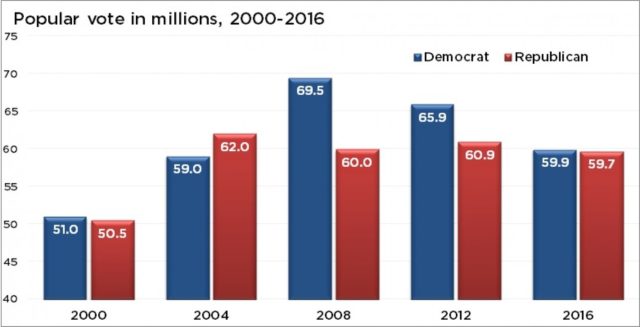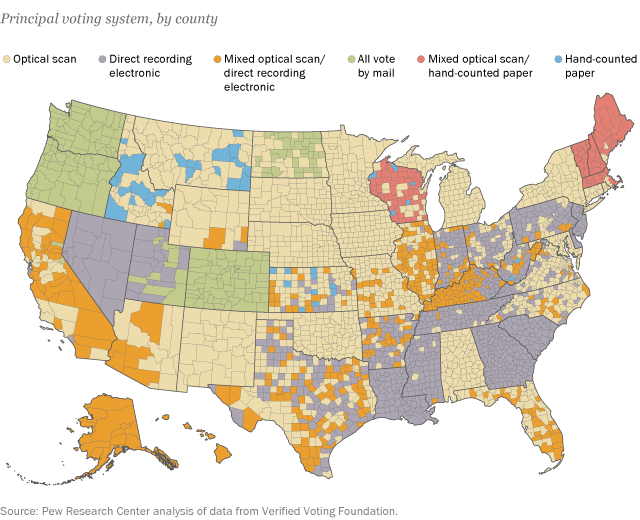The Daily Escape:

Cosmic Ashtray, Harris Wash, Escalante, UT – September 2023 photo by Michelle Strong. The rock that looks like a bird in the center sits in sand, not water.
There’s the whispering campaign among Democrats saying that Biden is too old to run, and there’s the whispering campaign that says Kamala Harris should be replaced on the ticket to help out ol’ Joe. Like the Biden whispers, when Wrongo speaks with Democrats about Harris, the vast majority are wishing that someone else would be the VP candidate on the Democratic 2024 presidential ticket.
Those two thoughts can be viewed as one, or independently of each other. Wrongo addressed the issue of Biden’s age here:
“Biden has slowed down, that’s objectively true. But he is worlds better than Trump. And if those are the choices for president in 2024, be thankful that the old guy is on the right side of history.”
Barring a Biden health catastrophe before the summer of 2024, no Democrat will challenge Biden’s running for a second term. But the same can’t be said for Harris. Some think Biden could inject new enthusiasm into his campaign by picking a new running mate for 2024.
These two whispering campaigns are linked because many Americans think that it’s crucial to have a vice president who is seen as a capable successor to a president, in this case, Biden. After all, he will be 86 when his second term ends in 2029. Even for a relatively healthy 80 year-old about to be 81, the odds of something going wrong increases steadily between 81 and 86.
Poll numbers indicate that the public doesn’t support Harris to that extent. She’s less popular than a relatively unpopular Biden. That’s not a good situation. OTOH, as the Niskanen Center says, VPs generally have little to no impact on a presidential race and almost no direct effect on voter decision-making.
Where they can make a slight difference is in targeted demographics. A candidate can pick up (or retain) support among certain groups of voters. This is where dropping Harris from the ticket would cause more problems than it would solve:
“…it is hard to imagine a core Democratic constituency that Biden can less afford to deliberately alienate than Black women, who gave the president an 81-point margin in 2020…especially at a time when pollsters keep warning that turnout among voters of color is one of the president’s worst potential problems.”
More:
“It is…impossible to deny that Harris has liabilities or deny that she has disappointed as both a presidential candidate and now as vice president. She’s been caught flat-footed too many times by what seemed like simple queries, and she has failed to stake out a clear policy space for herself inside the party. But Biden has done her no favors, either. He put her in charge of the southern border, an effectively impossible task given that Congress has shown zero interest in addressing the many problems there.”
Yet, according to Gallup, Harris had far better approval numbers at the time of her inauguration than Pence did when he became VP.
Booting Harris from the ticket would be a self-inflicted wound. Biden’s brand (and one of the keys to a 2024 victory) is that he’s a no-drama politician (in contrast to Trump). There’d be no better way to shatter that image than for Biden to dump his VP a year before the election.
Some Dems are worried that in a second Biden term, Harris will become the Party’s de facto 2028 nominee. It’s true that current or former VPs who seriously seek their Party’s nomination often get nominated. But Harris is at well under 50% in polls that asked who Democratic primary voters would support if Biden didn’t run again. One survey from Ipsos/Reuters had her at just 20%.
But, after eight years of seasoning as VP at the national level, it might be that Harris would be a much better candidate than she was in 2020. And there is no telling how governors like Gretchen Whitmer, Josh Shapiro or Gavin Newsome might handle the national spotlight. Think how Ron DeSantis withered once everyone got to know him.
So Harris isn’t going anywhere in 2024.
But there are other troubling issues for Dems who feel less than enthusiastic about the 2024 ticket. NBC says that political ad spending is projected to reach $10 billion by the end of this election cycle, making it the most expensive two years in political history. But Michelle Goldberg wrote that:
“…panic is setting in among some progressive groups because the donors who buoyed them throughout the Trump years are disengaging…..As both big and small donors pull back, there have been layoffs across the progressive ecosystem, from behemoths like the Sierra Club to insurgent outfits like Justice Democrats, the group that first recruited Alexandria Ocasio-Cortez…”
Dem funding is falling just when they need money more than ever:
“It was probably inevitable that left-leaning fund-raising would fall once the immediate crisis of Donald Trump’s presidency ended. Activism, like electoral politics, is often thermostatic: There’s more energy on the right when Democrats are in power, and more on the left during Republican administrations.”
Goldberg also mentions the Dems’ never-ending funds raising via email, something that frosts Wrongo:
“If you’re on any progressive mailing lists, you surely know what I’m talking about: the endless appeals, sometimes in bold all caps, warning of imminent Democratic implosion.”
The relentless drumbeat in Wrongo’s inbox has caused him to cut off the Democratic Party completely in the past two years. If every email is “critical” then none are critical. If this month’s deadline is “crucial” then next month’s can’t be.
Small donors are punished every day for their giving to Democrats. Their information is sold and repackaged back to them from all across the political ecosystem. Wrongo won’t begin donating again until January 2024.
Finally, it seems to be in the DNA of Democrats to want a deus ex machina to deliver them from Trump and Republicans. It may be that some of the 91 counts put Trump in jail, but don’t count on the 14th Amendment malarkey to get him off the ballot, unless he’s convicted of “treasonous conspiracy” like some of the Jan. 6 defendants.
Consistent with that, Many Dems are hoping for a savior to ride up on a white horse and “save” the Party from Biden and Harris.
But Democrats came to the dance with Biden — and that’s who they’re leaving with.







